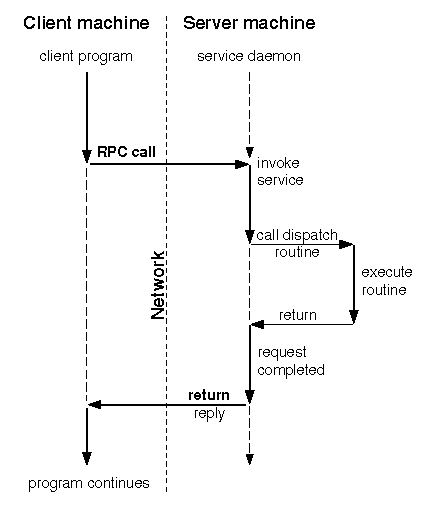
|
|
As shown in ``Network communication with the remote procedure call'', in RPC, a client makes a procedure call to send data packets to the server. When the packets arrive, the server calls a dispatch routine to perform whatever service is requested. When the dispatch routine returns, the server sends back a reply to the client.

Network communication with the remote procedure call
Programming with RPC produces programs that are designed to run within a client/server network model. Such programs use RPC mechanisms to avoid the details of interfacing to the network, and provide network services to their callers without requiring that the caller be aware of the existence and function of the underlying network. For example, a program can simply call rusers(3N), a C routine that returns the number of users on a remote machine. The caller is not explicitly aware of using RPC -- the call to rusers is as simple as a call to malloc.
This section addresses only the C interface to RPC, but remote procedure calls can be made from any language. Note that although this section describes the use of RPC for communication between processes on different machines, RPC works just as well for communication between different processes on the same machine.